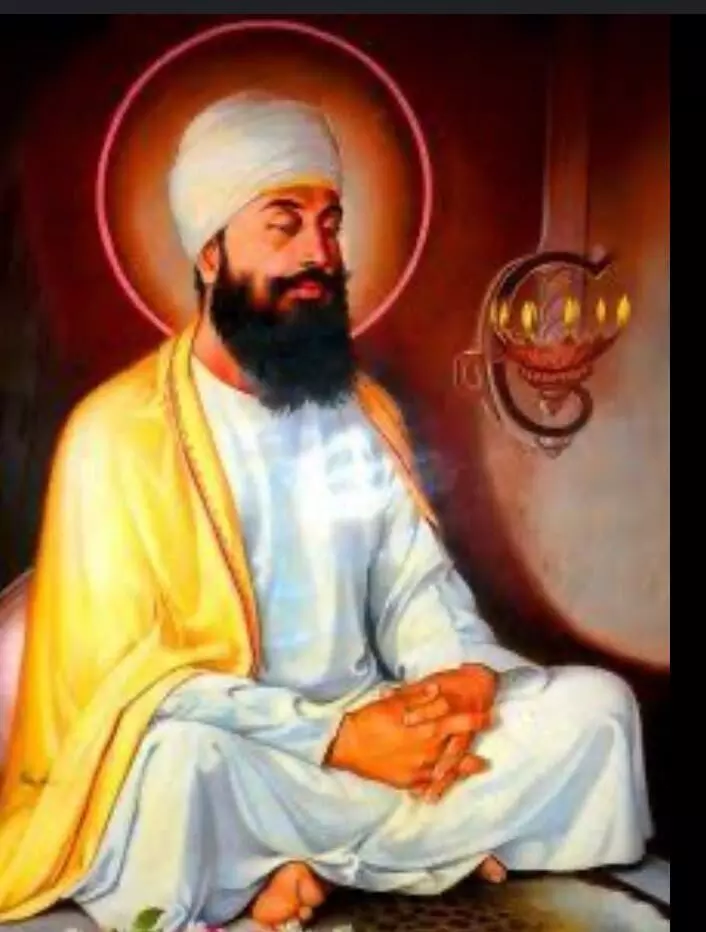Chadar-e-Hind - Guru Teg Bahadur's Sacrifice for Justice and Humanity

Who would be better than you to defend the poor Brahmins? asked Guru’s nine-year-old son. Kashmiri Pandits sought Guru’s help against Aurangzeb’s oppressive policies. The Guru, heeding his son’s advice, directed them to go in a body to Delhi and challenge the emperor to first convert Guru to Islam, and then all of them would follow suit.
Born Tyag Mal to Guru Hargobind, the sixth Sikh guru, his father rechristened him Teg Bahadur (brave sword) for his valor in battles against the Mughals. A principled leader, spiritual scholar, and gifted poet, he became the ninth Nanak of Sikhs, erudite in Vedas, Upnishads, and Puranas. He exhorted people to live an ethical and righteous life, amplifying Nanak’s message of humanity and the oneness of God. He founded the town of Anandpur Sahib, where his successor created ‘Khalsa,’ galvanizing the Sikhs with a distinct identity.
Guru Granth Sahib contains 116 hymns composed by him in 15 different Ragas. These emphasize the importance of meditation, selflessness, and devotion in one’s quest for deliverance. ‘Jio supna ar pekhna, aise jag kio jaan; In mein kachu sacho nahin, Nanak bin bhagwan’ (The world is like a dream, there is nothing real in it, O Nanak, but God). Shlok Mohalla Nauvan is his most acknowledged hymn. Traveling far and wide, wherever he went, he bettered the place, dug wells, built community centers for the needy, and fed the hungry.
Having heard the Kashmiris, Aurangzeb summoned the Guru to Delhi and gave him the choice to either perform a miracle and display his divine powers or embrace Islam. ‘Performing miracles is an unholy attempt to undo what Akalpurkh (Timeless One) had done and is against His will,’ he replied in defiance. ‘To convert under the fear of death is to surrender before injustice,’ he refused to convert too. In rage, the emperor ordered his execution.
‘Chinta ta ki kijiye, jo anhoni hoye; Eh marg sansar ko, Nanak thir nahi koe’ (Be anxious only regarding the unexpected. It is the way of the world, Nanak, that nothing is permanent); this was the consolation for his followers. Guru’s three companions, Mati Das, Dayala, and Sati Das were tortured to death before him; this, however, did not browbeat him, for he would never compromise for the sake of the ‘frontal mark and sacred thread (janeyu)’ of his Kashmiri brethren.
The Guru was beheaded at Chandni Chowk in front of Red Fort on the spot where Gurudwara Sishganj stands today. True to his name, he gave up his head, but not his principles (Sees diya par sirar na diya). ‘Naam rahiyo sadhu rahiyo, rahiyo Gur Gobind; Kaho Nanak eh jagat mein, kin japu gur mant’. (The Name remains, saints remain, and the guru who is one with God remains forever, says Nanak, how rare are those who chant Guru’s mantra in this world)); his sacrifice immortalized him, conferring upon him the title of Chadar-e-Hind (Shield of India).
While the world mourned, heavens hailed it as a victory. The execution hardened the resolve of Sikhs, and protection of human rights has since become central to their ideology.
Col HP Singh is a prolific writer and a keen student of Sikh religion and its history.
